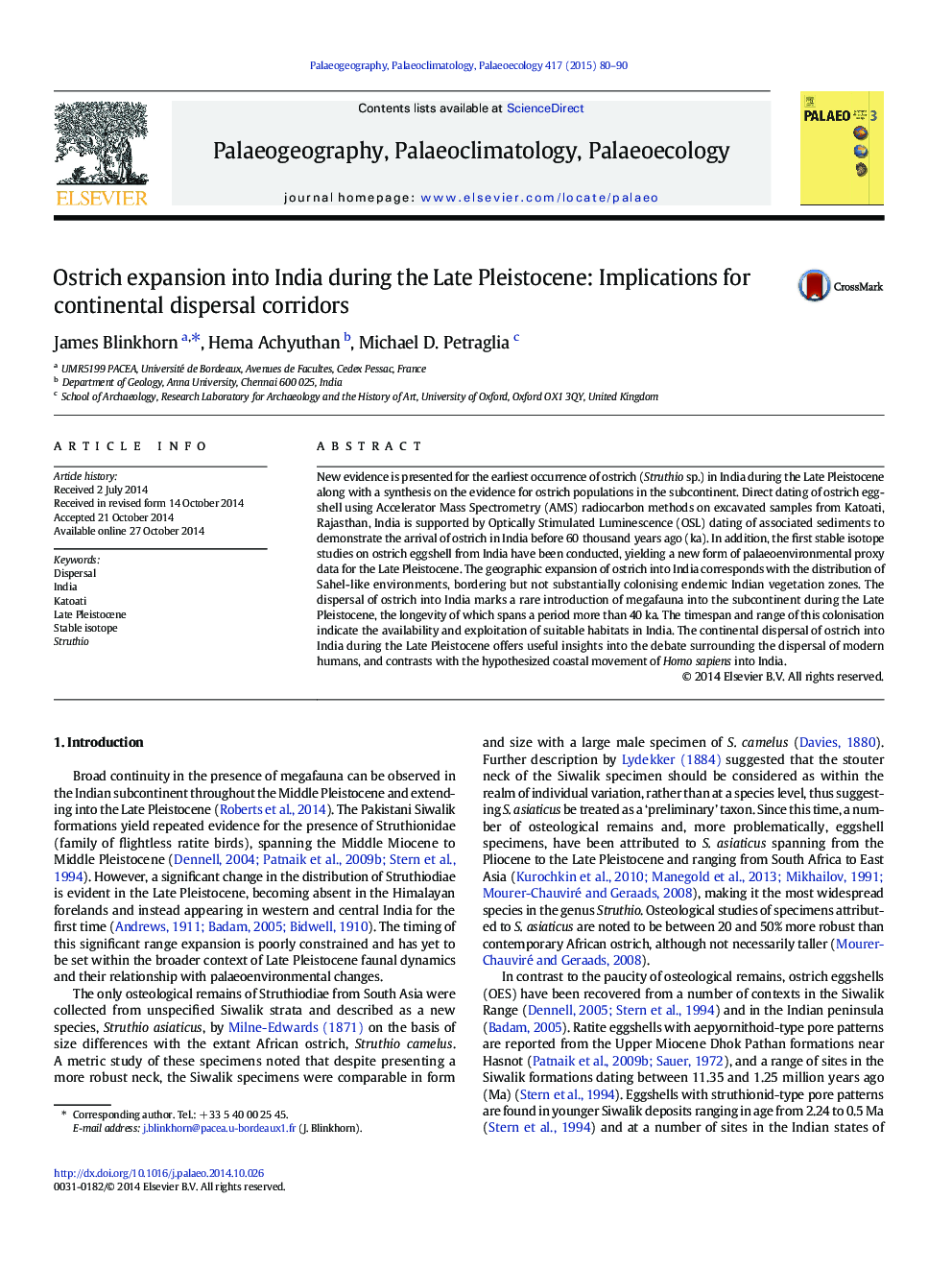| Article ID | Journal | Published Year | Pages | File Type |
|---|---|---|---|---|
| 6349843 | Palaeogeography, Palaeoclimatology, Palaeoecology | 2015 | 11 Pages |
Abstract
New evidence is presented for the earliest occurrence of ostrich (Struthio sp.) in India during the Late Pleistocene along with a synthesis on the evidence for ostrich populations in the subcontinent. Direct dating of ostrich eggshell using Accelerator Mass Spectrometry (AMS) radiocarbon methods on excavated samples from Katoati, Rajasthan, India is supported by Optically Stimulated Luminescence (OSL) dating of associated sediments to demonstrate the arrival of ostrich in India before 60 thousand years ago (ka). In addition, the first stable isotope studies on ostrich eggshell from India have been conducted, yielding a new form of palaeoenvironmental proxy data for the Late Pleistocene. The geographic expansion of ostrich into India corresponds with the distribution of Sahel-like environments, bordering but not substantially colonising endemic Indian vegetation zones. The dispersal of ostrich into India marks a rare introduction of megafauna into the subcontinent during the Late Pleistocene, the longevity of which spans a period more than 40 ka. The timespan and range of this colonisation indicate the availability and exploitation of suitable habitats in India. The continental dispersal of ostrich into India during the Late Pleistocene offers useful insights into the debate surrounding the dispersal of modern humans, and contrasts with the hypothesized coastal movement of Homo sapiens into India.
Related Topics
Physical Sciences and Engineering
Earth and Planetary Sciences
Earth-Surface Processes
Authors
James Blinkhorn, Hema Achyuthan, Michael D. Petraglia,
